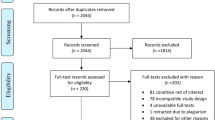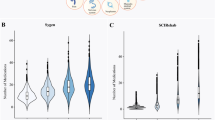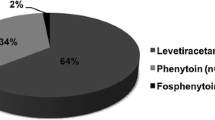Abstract
Background
Recent observational studies have shown an association between gabapentinoid anticonvulsants and greater motor recovery after spinal cord injury. There is preclinical evidence to suggest that other anticonvulsants, such as sodium channel blockers, may also confer beneficial effects.
Purpose
The aim of the current study was to determine if non-gabapentinoid anticonvulsants were associated with neurological recovery after acute, traumatic spinal cord injury.
Methods
This was an observational cohort study using data from the Sygen clinical trial. The primary outcome was total motor score recovery in the first year after injury. Anticonvulsant use was extracted from concomitant medication records; individuals were classified based on early administration (within 30 days of injury), or late/no administration. Motor recovery was compared using linear mixed effects regression models with a drug-by-time interaction, and adjustment for confounders. A secondary analysis incorporated a propensity score matched cohort.
Results
Of the cohort (n = 570), 6% received anticonvulsants (carbamazepine, phenytoin, clonazepam, phenobarbital, and valproic acid) early after injury. After adjustments for initial injury level and severity, early exposure to non-gabapentinoid anticonvulsants was not associated with motor neurological outcomes (p = 0.38 for all anticonvulsants, p = 0.83 for sodium channel blockers, p = 0.82 in propensity-matched cohort).
Conclusion
Non-gabapentinoid anticonvulsant exposure was not associated with greater or lesser neurological recovery. This suggests that these medications, as administered for the acute management of spinal cord injury, do not impact long-term neurological outcomes.

Similar content being viewed by others
References
Fawcett JW, Curt A, Steeves JD, Coleman WP, Tuszynski MH, Lammertse D, et al. Guidelines for the conduct of clinical trials for spinal cord injury as developed by the ICCP panel: spontaneous recovery after spinal cord injury and statistical power needed for therapeutic clinical trials. Spinal Cord. 2007;45:190–205.
Reier PJ, Lane MA, Hall ED, Teng YD, Howland DR. Translational spinal cord injury research: preclinical guidelines and challenges. Handb Clin Neurol. 2012;109:411–33.
Guy S, Mehta S, Leff L, Teasell R, Loh E. Anticonvulsant medication use for the management of pain following spinal cord injury: systematic review and effectiveness analysis. Spinal Cord. 2014;52:89–96.
Kitzman P, Cecil D, Kolpek JH. The risks of polypharmacy following spinal cord injury. J Spinal Cord Med. 2014;0:1–7.
Sitges M, Chiu LM, Reed RC. Effects of levetiracetam, carbamazepine, phenytoin, valproate, lamotrigine, oxcarbazepine, topiramate, vinpocetine and sertraline on presynaptic hippocampal Na(+) and Ca(2+) channels permeability. Neurochem Res. 2016;41:758–69.
Tedeschi A, Dupraz S, Laskowski CJ, Beyer M, Schultze JL, Bradke F, et al. The calcium channel subunit Alpha2delta2 suppresses axon regeneration in the adult CNS. Neuron. 2016;92:419–434.
Cragg JJ, Haefeli J, Jutzeler CR, Röhrich F, Weidner N, Saur M, et al. Effects of pain and pain management on motor recovery of spinal cord-injured patients: a longitudinal study. Neurorehabil Neural Repair. 2016;30:753–61.
Warner FM, Cragg JJ, Jutzeler CR, Röhrich F, Weidner N, Saur M, et al. Early administration of gabapentinoids improves motor recovery after human spinal cord injury. Cell Rep. 2017;18:1614–8.
Geisler FH, Coleman WP, Grieco G, Poonian D, Group SS. The Sygen multicenter acute spinal cord injury study. Spine (Phila Pa 1976). 2001;26:S87–98.
Kirshblum S, Waring W. Updates for the international standards for neurological classification of spinal cord injury. Phys Med Rehabil Clin N Am. 2014;25:505–17.
Geisler FH, Coleman WP, Grieco G, Poonian D. Recruitment and early treatment in a multicenter study of acute spinal cord injury. Spine (Phila Pa 1976). 2001;26:S58–67.
Bracken MB, Shepard MJ, Collins WF, Holford TR, Baskin DS, Eisenberg HM, et al. Methylprednisolone or naloxone treatment after acute spinal cord injury: 1-year follow-up data. Results of the second National Acute Spinal Cord Injury Study. J Neurosurg. 1992;76:23–31.
Geisler FH, Coleman WP, Grieco G, Poonian D. Measurements and recovery patterns in a multicenter study of acute spinal cord injury. Spine (Phila Pa 1976). 2001;15:S68–86.
Wishart DS, Feunang YD, Guo AC, Lo EJ, Marcu A, Grant JR, et al. DrugBank 5.0: a major update to the DrugBank database for 2018. Nucleic Acids Res. 2018;46:D1074–82.
R Core Team. R: A language and environment for statistical computing: reference index [Internet]. Vienna, Austria: R Foundation for Statistical Computing; 2015. Available from: https://cran.r-project.org/manuals.html. Accessed 11 Feb 2019.
Van Middendorp JJ, Hosman AJF, Pouw MH, Van De Meent H. Is determination between complete and incomplete traumatic spinal cord injury clinically relevant Validation of the ASIA sacral sparing criteria in a prospective cohort of 432 patients. Spinal Cord. 2009;47:809–16.
Dvorak MF, Noonan VK, Fallah N, Fisher CG, Rivers CS, Ahn H, et al. Minimizing errors in acute traumatic spinal cord injury trials by acknowledging the heterogeneity of spinal cord anatomy and injury severity: an observational Canadian cohort analysis. J Neurotrauma. 2014;31:1540–7.
Hains BC, Saab CY, Lo AC, Waxman SG. Sodium channel blockade with phenytoin protects spinal cord axons, enhances axonal conduction, and improves functional motor recovery after contusion SCI. Exp Neurol. 2004;188:365–77.
Ates O, Cayli SR, Gurses I, Turkoz Y, Tarim O, Cakir CO, et al. Comparative neuroprotective effect of sodium channel blockers after experimental spinal cord injury. J Clin Neurosci. 2007;14:658–65.
Schwartz G, Fehlings MG. Evaluation of the neuroprotective effects of sodium channel blockers after spinal cord injury: improved behavioral and neuroanatomical recovery with riluzole. J Neurosurg Spine. 2001;94:245–56.
Grossman RG, Fehlings MG, Frankowski RF, Burau KD, Chow DSL, Tator C, et al. A prospective, multicenter, Phase i matched-comparison group trial of safety, pharmacokinetics, and preliminary efficacy of riluzole in patients with traumatic spinal cord injury. J Neurotrauma. 2014;31:239–55.
Fehlings MG, Wilson JR, Frankowski RF, Toups EG, Aarabi B, Harrop JS, et al. Riluzole for the treatment of acute traumatic spinal cord injury: rationale for and design of the NACTN Phase I clinical trial. J Neurosurg Spine. 2012;17:151–6.
Anglemyer A, Horvath HT, Bero L. Healthcare outcomes assessed with observational study designs compared with those assessed in randomized trials. Cochrane Database Syst Rev. 2014;1:1. https://doi.org/10.1002/14651858.mr000034.pub2.
Steeves JD, Kramer JK, Fawcett JW, Cragg J, Lammertse DP, Blight AR, et al. Extent of spontaneous motor recovery after traumatic cervical sensorimotor complete spinal cord injury. Spinal Cord. 2011;49:257–65.
Author information
Authors and Affiliations
Corresponding author
Ethics declarations
Funding
F. Warner is supported by the University of British Columbia Four Year Fellowship. Dr. Jutzeler is supported by the International Foundation for Research in Paraplegia (IRP) and is a Craig H. Nielsen Foundation postdoctoral fellow. Dr. Cragg is supported by the Society in Science—Branco Weiss Postdoctoral Fellowship and the Michael Smith Foundation for Health Research (MSFHR). Dr. Kramer is supported by a Scholar Award from the MSFHR and Rick Hansen Institute as well as the Canadian Institutes of Health Research (CIHR), ERA-NET NEURON, Wings for Life, and IRP.
Conflict of interest
The authors Freda M. Warner, Catherine R. Jutzeler, Jacquelyn J. Cragg, Bobo Tong, Lukas Grassner, Frank Bradke, Fred Geisler, and John K. Kramer declare that they have no potential conflicts of interest that might be relevant to the contents of this manuscript.
Ethical approval
Approval for this study (secondary analysis) was received from an institutional ethical standards committee on human experimentation at the University of British Columbia.
Electronic supplementary material
Below is the link to the electronic supplementary material.
Rights and permissions
About this article
Cite this article
Warner, F.M., Jutzeler, C.R., Cragg, J.J. et al. The Effect of Non-Gabapentinoid Anticonvulsants on Sensorimotor Recovery After Human Spinal Cord Injury. CNS Drugs 33, 503–511 (2019). https://doi.org/10.1007/s40263-019-00622-6
Published:
Issue Date:
DOI: https://doi.org/10.1007/s40263-019-00622-6




